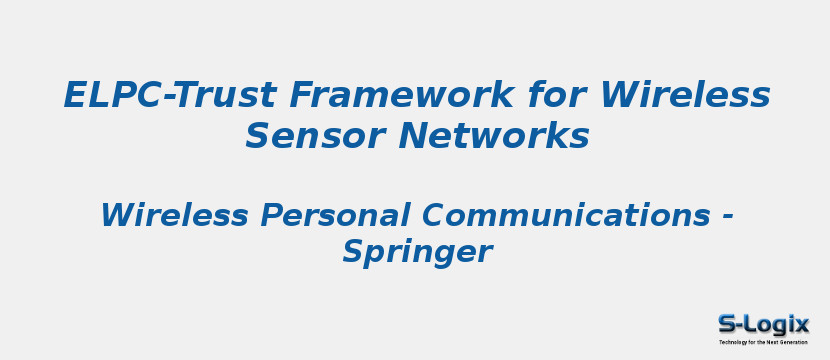Research Area: Wireless Sensor Networks
Wireless Sensor Network (WSN) and its security concern play a vital part in its effecting functioning. WSN routing layer attacks pose a great threat to its functionality, whereas if a situation arises in which multiple attacks co-exist, then the scenario will become worse. In such cases the reliability of the network deployed is greatly questionable. Thus an Intrusion detection cum Trust based framework is mandatory to detect such co existing malicious activities in order to maintain the network reliability. Energy packed Cluster heads and sink nodes are utilized for this kind of trust computation process. To achieve this, an energy based abnormality detection of malicious nodes is proposed, upon which based on the packet rate and the lifetime of sensor nodes a trust value is computed. The trust framework involves two phases namely Threat Detection phase which performs attack categorization based on Energy, Packet Count and Z scores followed by the second phase which computes the trust values for each node. Trust scores are computed based on the intensity of the attack in terms of their network performance degradation. Attacks such as Gray hole, Black hole, Wormhole, Flooding and Data Modification attacks are addressed. Data Modification attacks are detected uniquely based on the Z scores values of the sensed data set and upon the location of the nodes. If any node is found to consume abnormal energy either below or above certain threshold, identified nodes are categorized into two groups based on their threshold. Hierarchical decision making is introduced, which implies only the abnormal energy consuming nodes (among the total sensor nodes deployed in the network) are considered for further packet count based attack categorization. This way we can reduce the computational overhead of traditional trust models in which each node is checked for its reliability against multiple trust factors. Upon detecting the attacks and computing the trust values of nodes, only the nodes which have a nominal trust value are included in the routing process. Simulations were carried out in NS2 Mannasim Framework with static and mobile sensor nodes. Proposed Energy-Lifetime-Packet Count (ELPC)-Trust framework was tested under five different types of attack scenarios in a co-existing manner. Performance of the network by including the proposed ELPC trust and by ignoring the detected malicious nodes increases the throughput by 500 and PDR by 40% when compared with the attack scenario. But on the other hand introduces a delay of 0.5 seconds. Network Performance is improved in case of static networks. Under mobile scenarios proposed ELPC trust incurs high amount of delay.
Keywords:
Author(s) Name: N. Dharini,N. Duraipandian,Jeevaa Katiravan
Journal name: Wireless Personal Communications
Conferrence name:
Publisher name: Springer
DOI: 10.1007/s11277-020-07288-0
Volume Information: volume 113, pages 1709–1742 (2020)
